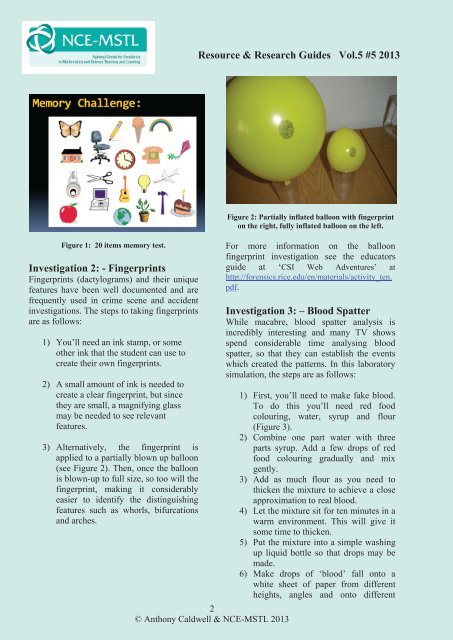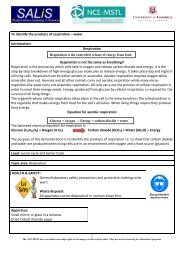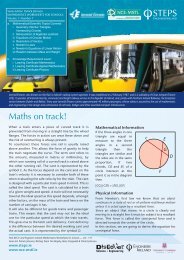Simple Forensic Science Experiments - NCE-MSTL
Simple Forensic Science Experiments - NCE-MSTL
Simple Forensic Science Experiments - NCE-MSTL
You also want an ePaper? Increase the reach of your titles
YUMPU automatically turns print PDFs into web optimized ePapers that Google loves.
Resource & Research Guides Vol.5 #5 2013Figure 1: 20 items memory test.Investigation 2: - FingerprintsFingerprints (dactylograms) and their uniquefeatures have been well documented and arefrequently used in crime scene and accidentinvestigations. The steps to taking fingerprintsare as follows:1) You’ll need an ink stamp, or someother ink that the student can use tocreate their own fingerprints.2) A small amount of ink is needed tocreate a clear fingerprint, but sincethey are small, a magnifying glassmay be needed to see relevantfeatures.3) Alternatively, the fingerprint isapplied to a partially blown up balloon(see Figure 2). Then, once the balloonis blown-up to full size, so too will thefingerprint, making it considerablyeasier to identify the distinguishingfeatures such as whorls, bifurcationsand arches.2© Anthony Caldwell & <strong>NCE</strong>-<strong>MSTL</strong> 2013Figure 2: Partially inflated balloon with fingerprinton the right, fully inflated balloon on the left.For more information on the balloonfingerprint investigation see the educatorsguide at ‘CSI Web Adventures’ athttp://forensics.rice.edu/en/materials/activity_ten.pdf.Investigation 3: – Blood SpatterWhile macabre, blood spatter analysis isincredibly interesting and many TV showsspend considerable time analysing bloodspatter, so that they can establish the eventswhich created the patterns. In this laboratorysimulation, the steps are as follows:1) First, you’ll need to make fake blood.To do this you’ll need red foodcolouring, water, syrup and flour(Figure 3).2) Combine one part water with threeparts syrup. Add a few drops of redfood colouring gradually and mixgently.3) Add as much flour as you need tothicken the mixture to achieve a closeapproximation to real blood.4) Let the mixture sit for ten minutes in awarm environment. This will give itsome time to thicken.5) Put the mixture into a simple washingup liquid bottle so that drops may bemade.6) Make drops of ‘blood’ fall onto awhite sheet of paper from differentheights, angles and onto different




